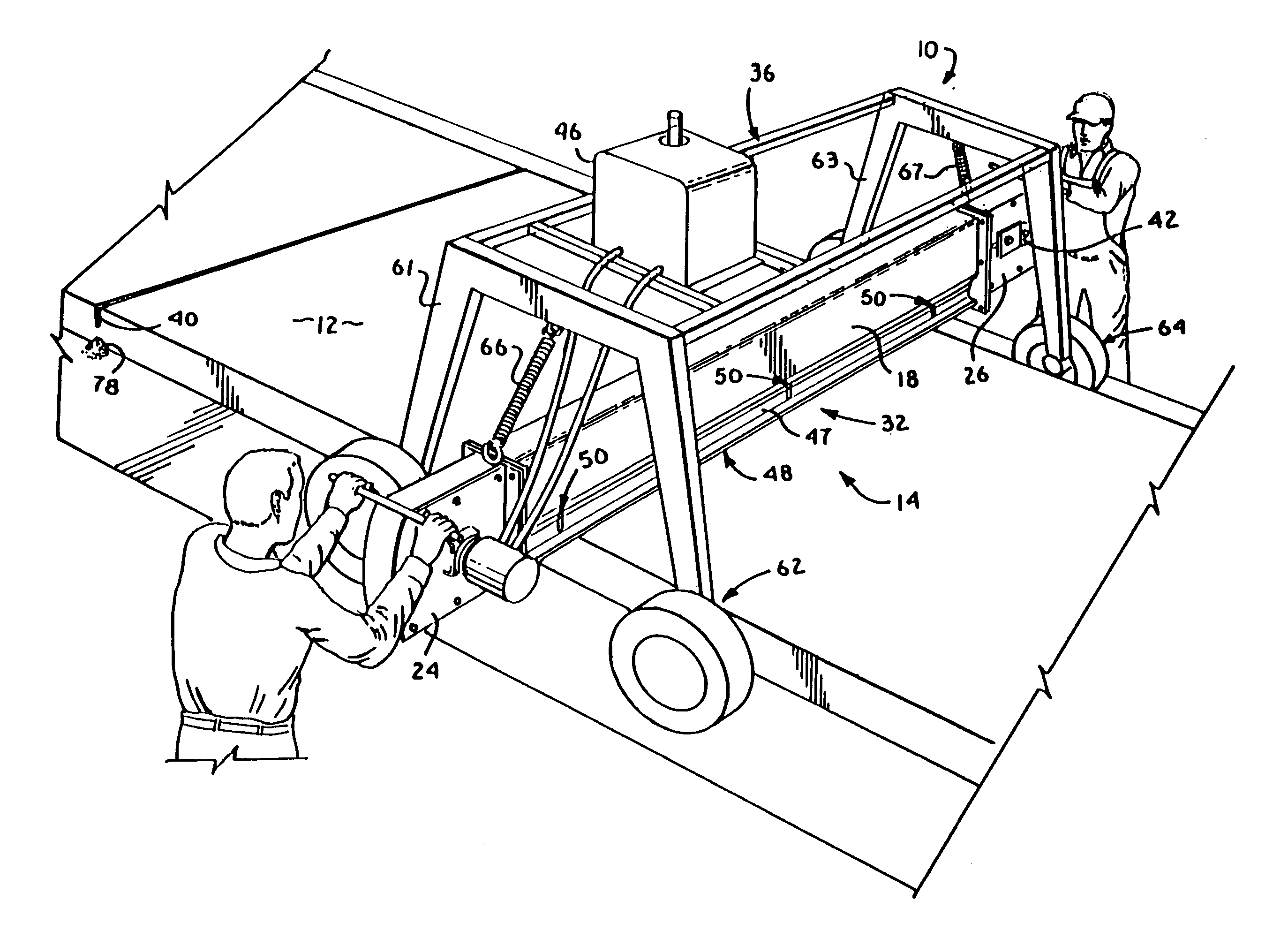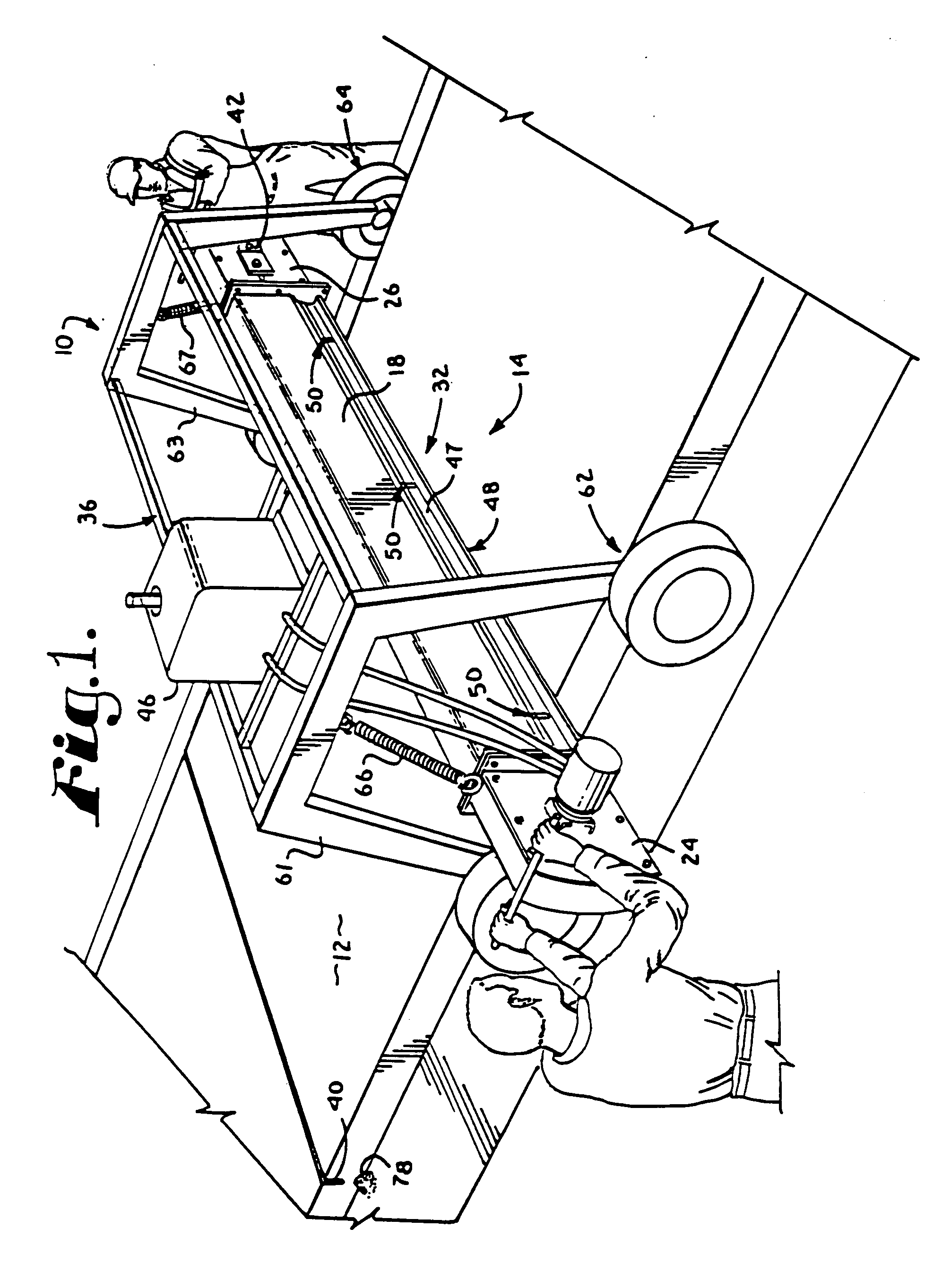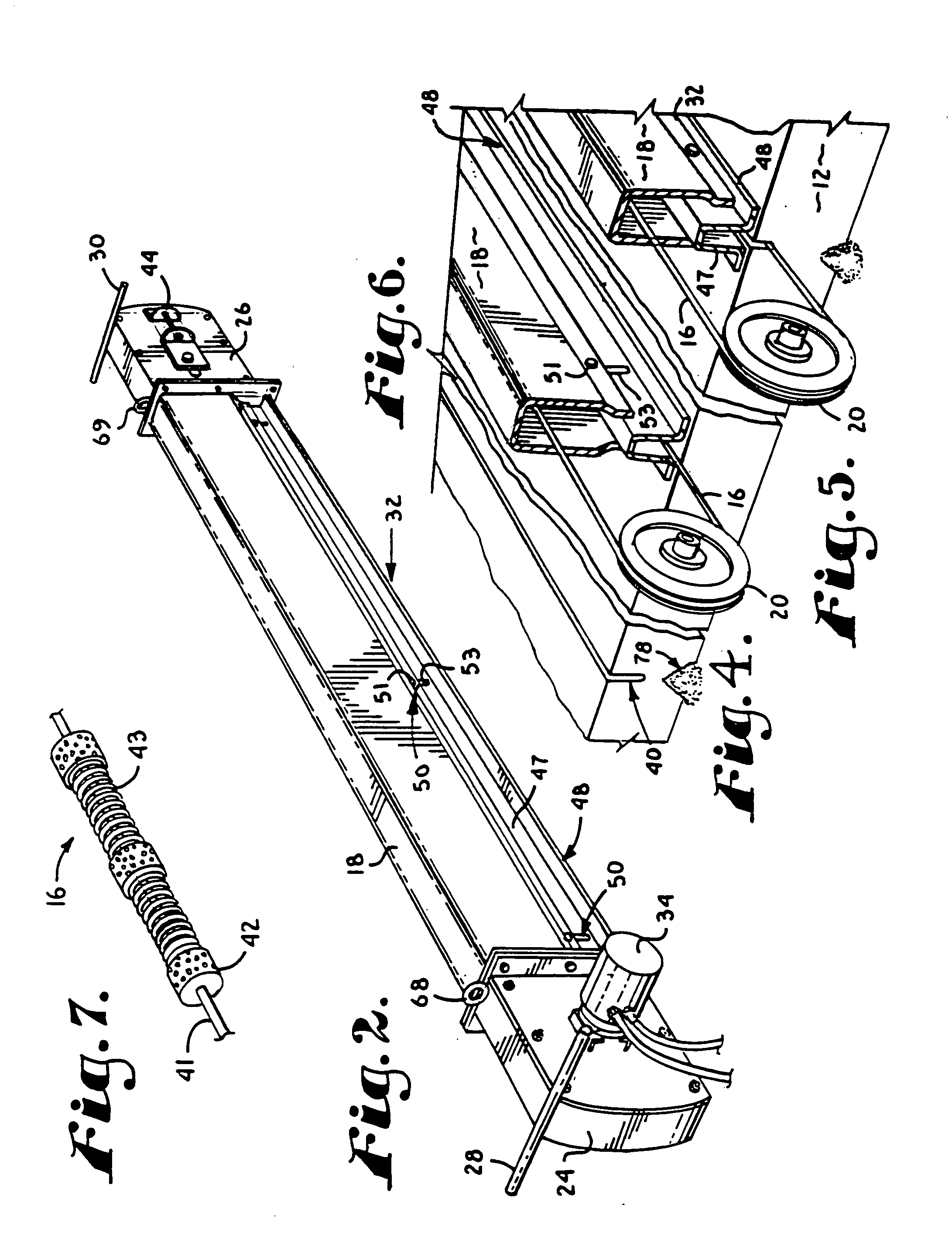Apparatus for cutting concrete using abrasive cable
a technology of abrasive cable and concrete, which is applied in the direction of ceramic shaping apparatus, stone-like material working tools, manufacturing tools, etc., can solve the problems of inability to use in all states, inability to meet the needs of construction, and prior art devices experience undesirable and sometimes unpredictable changes in operation, precision and performance, etc., to achieve greater flexibility, reduce the effect of concrete slab spalling or chipping, and reduce the effect of labor intensity
- Summary
- Abstract
- Description
- Claims
- Application Information
AI Technical Summary
Benefits of technology
Problems solved by technology
Method used
Image
Examples
Embodiment Construction
.
BRIEF DESCRIPTION OF THE DRAWINGS
[0018]FIG. 1 is an isometric view of a preferred embodiment of the apparatus of the present invention, wherein the apparatus is depicted in actual operation.
[0019]FIG. 2 is an isometric view of a cutting head component of the apparatus of FIG. 1.
[0020]FIG. 3 is an exploded, fragmentary, isometric view of certain subcomponents of the cutting head component of FIG. 2.
[0021]FIG. 4 is a sectional, fragmentary, isometric view of a portion of the apparatus of FIG. 1 immediately prior to beginning a cut.
[0022]FIG. 5 is a sectional, fragmentary, isometric view of the portion of the apparatus shown in FIG. 4 in the process of making the cut.
[0023]FIG. 6 is an isometric view of the finished cut which was begun in FIG. 4.
[0024]FIG. 7 is an enlarged, fragmentary, isometric view of a length of an abrasive cable in the form of diamond wire used as the preferred cutting element of the apparatus.
[0025]FIG. 8 is an enlarged and fragmentary cross-sectional vi...
PUM
| Property | Measurement | Unit |
|---|---|---|
| distance | aaaaa | aaaaa |
| pressure | aaaaa | aaaaa |
| flexible | aaaaa | aaaaa |
Abstract
Description
Claims
Application Information
 Login to View More
Login to View More - R&D
- Intellectual Property
- Life Sciences
- Materials
- Tech Scout
- Unparalleled Data Quality
- Higher Quality Content
- 60% Fewer Hallucinations
Browse by: Latest US Patents, China's latest patents, Technical Efficacy Thesaurus, Application Domain, Technology Topic, Popular Technical Reports.
© 2025 PatSnap. All rights reserved.Legal|Privacy policy|Modern Slavery Act Transparency Statement|Sitemap|About US| Contact US: help@patsnap.com



